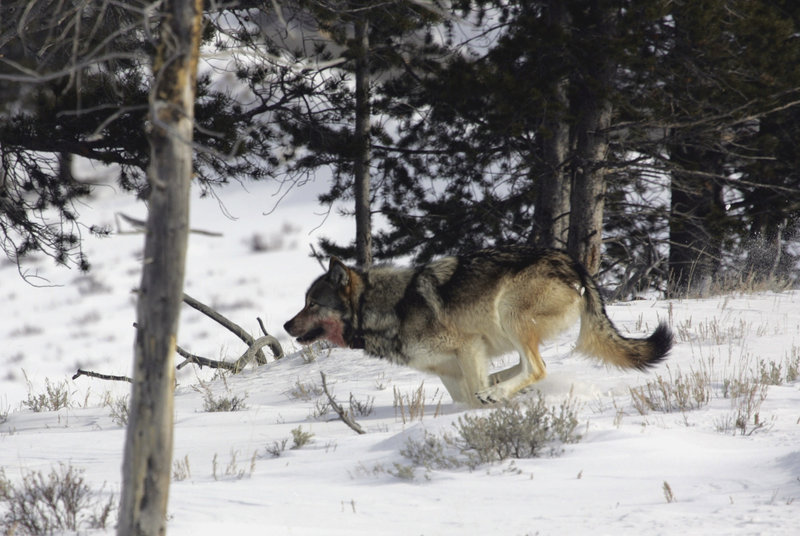BILLINGS, Mont. – Two decades after the federal government spent a half-million dollars to study the reintroduction of gray wolves to the Northern Rockies, lawmakers say it’s time for Congress to step in again — this time to clamp down on the endangered animals.
To do so they are proposing to bypass the Endangered Species Act and lift protections, first enacted in 1974, for today’s booming wolf population.
Critics say the move would undercut one of the nation’s premiere environmental laws and allow for the unchecked killing of wolves across the West.
But bitterness against the predator is flaring as livestock killings increase and some big game herds dwindle. And with state efforts to knock back the predators’ expansion stalled in court, senators from Montana, Wyoming, Idaho and Utah want to strip wolves of their endangered status by force.
“When they brought wolves to Idaho, the Legislature voted against it, the governor didn’t want it and the congressional delegation didn’t want it,” said Idaho Republican Sen. James Risch. “We didn’t want them in the first place. But we are prepared to deal with them as we see fit.”
After the reintroduction study, 66 wolves were brought from Canada to Central Idaho and Yellowstone National Park. The population hit the original recovery benchmark of 300 animals a decade ago, and at least 1,700 wolves now roam parts of six states.
Yet wildlife advocates warn the attempt to strong-arm a public hunt through congressional action would set a dangerous precedent for other endangered species.
“It’s comparable to throwing an individual species off of Noah’s ark,” said Doug Honnold, a Montana attorney representing groups that won an Aug. 5 court ruling that returned wolves to the endangered list.
No state has proposed getting rid of wolves entirely, despite calls to do so by individual ranchers. Montana and Idaho have plans to reduce their populations by 15 percent and about 40 percent, respectively.
Those states and the U.S. Fish and Wildlife Service appealed the August ruling last week. A final ruling could take years.
State officials say intervention by Congress may be the only viable option remaining.
Wolves were off the endangered list for over a year before the latest court ruling. In that time, hunters in Montana and Idaho killed 260 of the animals, including members of a well-known Yellowstone National Park pack that crossed onto Montana land.
Yet those managed hunts were a far cry from the days when bounty hunters known as “wolfers” poisoned, shot, trapped and burned the species to near-extinction early in the last century.
A count at the end of 2009 showed the region’s wolf population rose slightly last year despite the hunts. Wildlife officials heralded the increase as proof the states could show restraint.
Even without public hunting, government wildlife agents regularly retaliate against wolves that attack livestock, typically by shooting them from aircraft.
“Government agents killing wolves with shotguns from helicopters — that’s not the model of conservation we had in mind,” said Carolyn Sime, head of the Montana Fish, Wildlife and Parks’ wolf program.
“It took an act of Congress to direct the U.S. Fish and Wildlife Service to study reintroduction. Maybe that’s fitting as a way to resolve this,” she said.
Send questions/comments to the editors.



Success. Please wait for the page to reload. If the page does not reload within 5 seconds, please refresh the page.
Enter your email and password to access comments.
Hi, to comment on stories you must . This profile is in addition to your subscription and website login.
Already have a commenting profile? .
Invalid username/password.
Please check your email to confirm and complete your registration.
Only subscribers are eligible to post comments. Please subscribe or login first for digital access. Here’s why.
Use the form below to reset your password. When you've submitted your account email, we will send an email with a reset code.